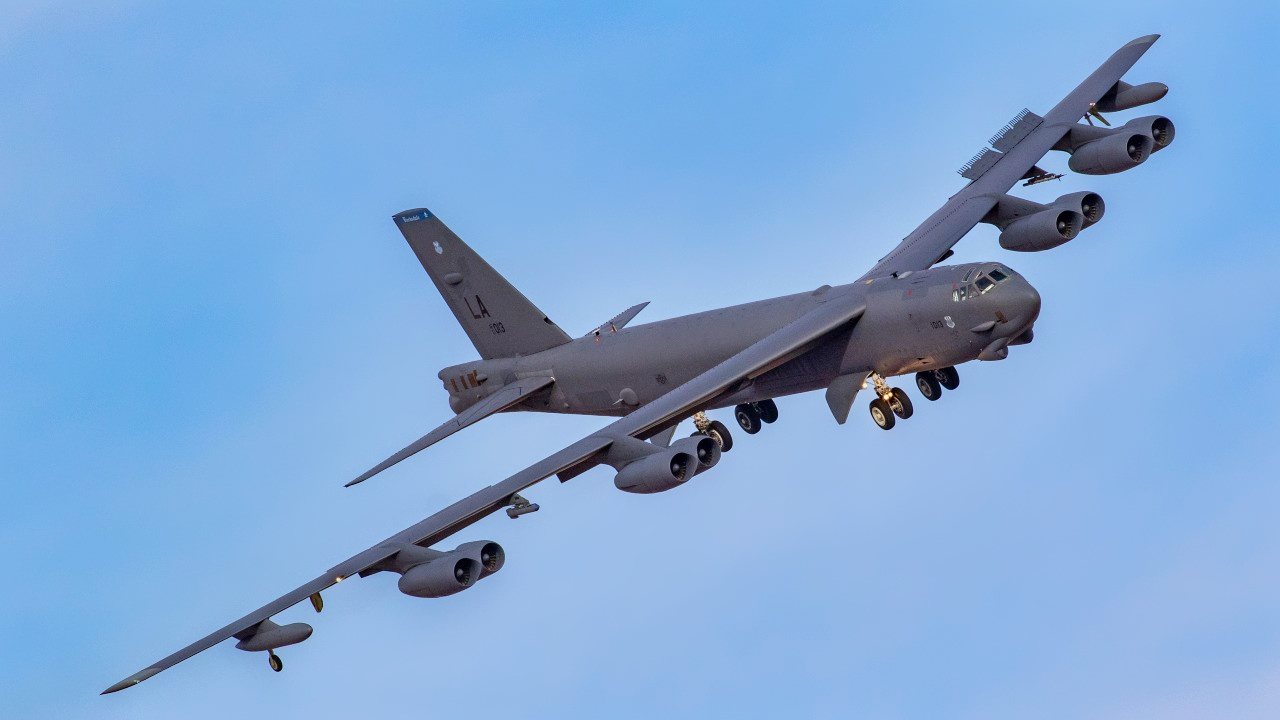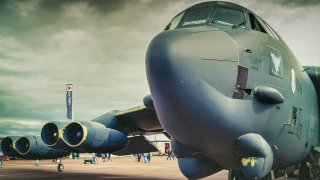A U.S. Air Force B-52 Bomber Just Fueled Up at a Commercial Gas Station in the Sky
Last month, the U.S. Air Force marked a significant milestone when an Omega Aerial Refueling Services-operated KDC-10 tanker refueled a B-52 Stratofortress for the first time in history, demonstrating an innovative approach to enhancing military readiness and operational flexibility.
Summary: The U.S. Air Force marked a significant milestone last month when an Omega Aerial Refueling Services-operated KDC-10 tanker refueled a B-52 Stratofortress for the first time in history, demonstrating an innovative approach to enhancing military readiness and operational flexibility. This event underscored the potential for commercial aerial refueling services to supplement military capabilities, particularly in regions where the demand for tankers exceeds the supply. Omega's engagement with the military, which began in 1999, has evolved to include refueling operations for various aircraft, including fighter jets and now, strategic bombers. The successful refueling over the Pacific Ocean not only signifies the B-52's enduring relevance in the U.S. arsenal but also highlights the strategic advantage of integrating commercial solutions to address logistical challenges. This collaboration offers a practical response to the "tyranny of distance" in the Pacific, enabling sustained military operations and reinforcing the U.S.'s commitment to maintaining a formidable presence in critical theaters worldwide.
The B-52 Stratofortress Bomber Just Made More History
There are times when U.S. military vehicles must fuel up at civilian gas stations, and military aircraft can also refuel at civilian airfields. However, last month, a United States Air Force B-52 Stratofortress made history by refueling via a commercial operator in the sky.
For the first time, one of the air service's long-range strategic bombers was fueled up via an aircraft operated by Omega Aerial Refueling Services Incorporated – an American aviation company that provides aerial refueling services for military customers. Omega developed the first commercial aerial refueling aircraft in 1999 and it has provided aerial refueling services under contract to the United States Navy since 2001.
A Historic First for the B-52
On March 10, 2024, in a historic first, an Omega KDC-10 refueled a B-52 Stratofortress assigned to the 49th Test and Evaluation Squadron, Barksdale Air Force Base (AFB), Louisiana, and an MC-130J assigned to the 1st Special Operations Squadron, Kadena Air Base, Japan over the Pacific Ocean.
It was the first commercial aircraft to refuel both military aircraft, while it further highlights how the military can rely on commercial refueling.
"These types of missions significantly advance Total Force power projection capabilities and exponentially increase readiness," explained Col. Jon Baize, Chief of Contingency Operations at Headquarters PACAF. “With commercial air refueling in theater, wings and warfighters saw immediate return on investment, getting training and unique opportunities they otherwise couldn't get in this AOR due to demand signal for tankers outpacing supply. By having an on-demand, flexible, highly mission-capable tanker available, PACAF is able to open the aperture for global mobility."
Though the B-52 has been in service for more than seven decades, this was still a first for the venerable long-range bomber.
It was just last November that Omega refueled six Pacific Air Forces F-16 Fighting Falcons en route from Osan Air Base, Republic of Korea, to Singapore, allowing the F-16s to participate in the multinational exercise COMMANDO SLING. That was the first instance of a commercial tanker aircraft providing contracted aerial refueling support to U.S. Air Force fighter aircraft.
Gas Station in the Sky
The McDonnell Douglas KC-10 Extender serves as a flying gas station – and was developed to supplement the KC-135 Stratotanker following experiences in Southeast Asia and the Middle East. Similar to the U.S. Air Force's Stratotanker and KC-46 Pegasus, the KDC-10 utilizes a boom operating system and can carry 29,000 gallons of fuel, and 41,000 gallons of fuel with an additional fuselage tank.
At issue is that there are times when not enough U.S. air refuelers are available, and the ability to utilize commercial tankers is just one of many examples of how U.S. forces can challenge the status quo to fly, sail and operate anywhere international law allows, at the time and tempo of their choosing.
"Aerial refueling is the lifeline of military operations in the Pacific due to the tyranny of distance between suitable airfields," said Lt. Col. Reagan Mullin, 1st Special Operations Squadron director of operations, Kadena Air Base, Japan. "The Omega commercial refueling platform offers military aircrew operating in the Pacific with another option to train and obtain mission support when tanker demand exceeds existing military capacity. We can't wait to work with Omega again!"
With the capability of delivering 400-900 gallons a minute, the KDC-10 offers flexibility that enabled the U.S. Air Force's B-52s to continue to actively train during operations and exercises while integrating alongside Allies and partners throughout the region. Bomber Task Force missions actively enable strategic bombers to operate with greater operational resilience from various overseas and continental U.S. locations.

Overcoming the "Tyranny of Distance"
For last month's historic refueling, the Omega KDC-10 transited from Osan Air Base, Republic of Korea to Andersen AFB, Guam completing four successful, safe contacts with the B-52 and MC-130J. It leveraged the capability of commercial air-to-air refueling allowing the U.S. Air Force to increase warfighter readiness in the priority theater and around the globe.
"Depth and resiliency of capability is how we enable and continue the fight to meet our objectives," Spinelli said. "In the theater known for its 'tyranny of distance' the needed sustainment of airborne assets is critical in lens of competition as much as it is in conflict."
Author Experience and Expertise: Peter Suciu
Peter Suciu is a Michigan-based writer. He has contributed to more than four dozen magazines, newspapers, and websites with over 3,200 published pieces over a twenty-year career in journalism. He regularly writes about military hardware, firearms history, cybersecurity, politics, and international affairs. Peter is also a Contributing Writer for Forbes and Clearance Jobs. You can follow him on Twitter: @PeterSuciu.
You can email the author: [email protected].


